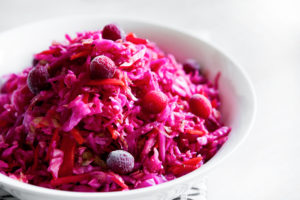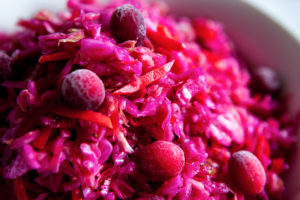
Fermented foods are commonly found in cultures throughout the world – sauerkraut and kimchi, kombucha, yoghurt, kefir sourdough bread and more. This is foods that have been through a process of Lacto-fermentation in which natural bacteria feed on the sugar and starch in the food creating lactic acid. This process preserves the food and creates beneficial enzymes, b-vitamins, Omega-3 fatty acids, and various strains of probiotics.
Natural fermentation of foods has also been shown to preserve nutrients in food and break the food down to a more digestible form. This, along with the bevvy of probiotics created during the fermentation process, could explain the link between the consumption of fermented foods and improved digestion.
This winter I decided to explore the fermentation process of some products, such a sourdough bread and sauerkraut. And add more fermented products to my diet.
Sauerkraut is cabbage that has been fermented, which is where the distinct sour taste comes from. The sour and tangy taste of crunchy sauerkraut perfectly brings balance to the heavy and fatty winter menu. Sauerkraut shines in the sandwiches (seriously good!) and will be an excellent garnish for dishes with meat, sausages or potatoes. Kraut makes a glorious stew – spicy and warming up, It can be the perfect dinner dish for a chilly day.
There is so much you can do with kraut. I love to add it in my macro bowl. The fermented food is highly recommended for the macrobiotic diet.
In this recipe, I also use grated beets and caraway seeds, they give to the kraut the beautiful vibrant colour and sweet earthy taste.
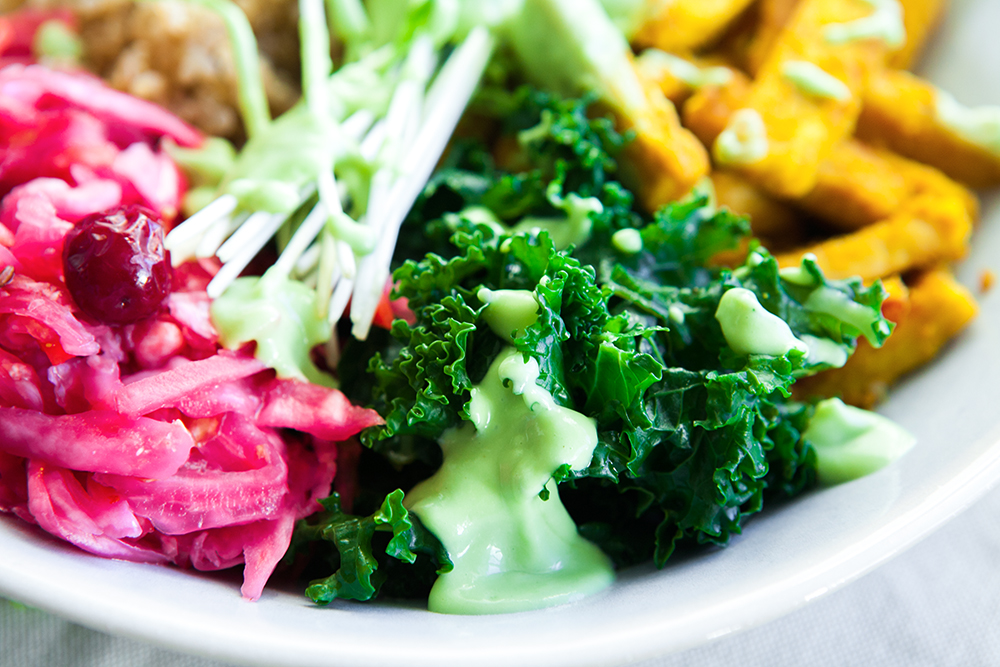
Macro bowl: Indonesian style turmeric tempeh, quinoa, steamed kale, sauerkraut and avocado sauce
Ingredients
- 1 kg head of cabbage, cored and thinly sliced
- 1 medium size carrot, grated
- 1 medium size beetroot, grated – optional
- 20 g sea salt
- 2 tsp caraway seeds – optional
+ Sauerkraut crock or large non-reactive pot
Directions
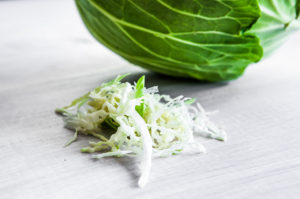
Thinly slice cabbage using a sharp knife or mandoline slicer. Grate carrots and beetroot.
Toss cabbage and salt together in a large mixing bowl and begin to squeeze the cabbage and salt together with your hands. When the juice starts to form on cabbage/salt mixture, add carrot, beet and caraway seeds, mix well. Pack tightly into crock using sanitized utensils or clean hands. Cover with a cabbage leaf. Cover kraut with a plate or some other lid that fits snugly inside the crock.
Place a clean weight (a glass jug filled with water) on the cover. This weight is to force water out of the cabbage and then keep the cabbage submerged under the brine. Cover the whole thing with a cloth to keep dust and flies out. Keep the sauerkraut at cool room temperature away from direct sunlight.
The first three days is necessary to prick cabbage a few times with a fork to come out bubbles and excess of gas.
Taste the kraut. Generally, it starts to be tangy after a few days, and the taste gets stronger as time passes. In the cool temperatures in winter, kraut can keep improving for a month.
Test the sauerkraut every few days until it is done to your liking. Transfer to the refrigerator or other cold storage where it should keep for at least 6 months and up to 1 year.
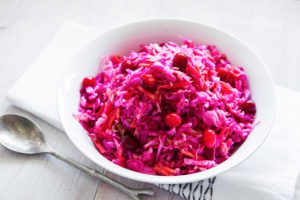
Tips:
- Discard the wilted outer leaves of the cabbage. Remove the upper green leaves, too. They are not crisp and give an ugly colour. But do not throw them away, it’s a good cover for kraut crock surface.
- Keep all equipment and tools for the preparation are clean. When fermenting anything, it’s best to give the good, beneficial bacteria every chance of succeeding by starting off with as clean an environment as possible.
- Sometimes mold appears on the surface. Don’t worry about this. It’s just a result of contact with the air. The kraut itself is under the anaerobic protection of the brine.
- Use fresh cabbage. The better your ingredients, the better the finished product will be.
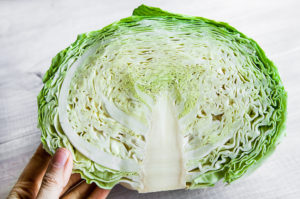
- To make sauerkraut salad toss some cranberries and apple slices, season with some sugar and salad oil. Also perfect with sliced onion and red capsicum. This is a great, unusual twist on plain old sauerkraut.
Enjoy!
